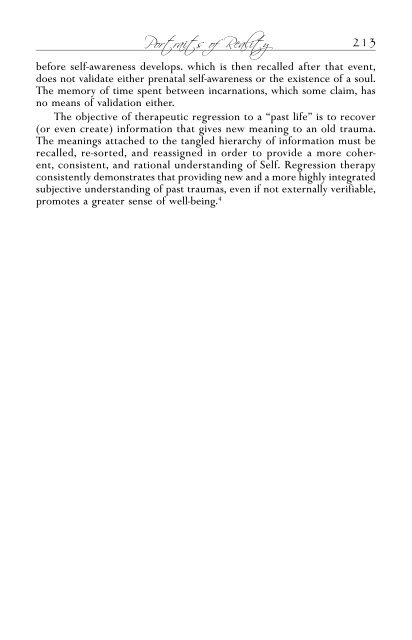edgar-mitchell
edgar-mitchell
edgar-mitchell
You also want an ePaper? Increase the reach of your titles
YUMPU automatically turns print PDFs into web optimized ePapers that Google loves.
Down and In 107<br />
Another version of the same experiment was a telepathy test conducted<br />
with an EEG connected, which proved statistically significant. The brain<br />
waves of the percipients showed a marked change a few hundred milliseconds<br />
before the percipients reported an answer. Conscious awareness hadn’t<br />
received information until nearly a half-second after subconscious processes<br />
had received the signal. The result is quite similar to tests of the five<br />
normal senses, in which conscious awareness lags behind subconscious signal<br />
processing.<br />
In the initial plan we wanted to test all of Uri’s special abilities, particularly<br />
those that demonstrated a strong component of psychokinesis,<br />
because that was the most bizarre and difficult to explain within the existing<br />
framework of science. One of his trademark capacities was the ability<br />
to bend common metal objects, such as forks and spoons. Of course one of<br />
the objectives was to test this while filming with videotape and 16-millimeter<br />
film. But when we placed a spoon on a table under a glass jar, we found he<br />
couldn’t bend the utensil. However, when we allowed him to touch the<br />
spoon, he explained to us how it seemed to “turn to plastic” in his hand.<br />
But this was generally unconvincing to scientists who specialized in other<br />
realms of study. They claimed Uri merely had extraordinarily strong fingers<br />
and possessed the ability to twist the metal under his peculiar grip, or<br />
that he had some unknown solvent on his finger that softened the metal.<br />
Yet no one was aware of any such solvent that could be used in this way;<br />
the physicians in the group couldn’t explain how he could be capable of<br />
twisting the metal so adroitly into such a neat little coil by merely touching<br />
it with a single finger. But the objections persisted. At times their explanations<br />
were more far-fetched than the event itself, and seemed little more<br />
than tortured rationalizations.<br />
Most convincing to me, however, were the dozens of children I investigated<br />
who had watched Uri bend spoons in this manner on television.<br />
Shortly following the tests at SRI, Uri made a series of television appearances,<br />
during which he did his thing before the cameras. Soon after the<br />
broadcasts my phone would ring with frantic parents reporting that their<br />
children were bending spoons as well. I could usually sense what part of<br />
the world Uri was in by the parents calling to report that their children<br />
were bending the family silverware.<br />
I went to a number of homes around the country, sometimes with my<br />
own spoons in pocket, or I would select one at random from the family<br />
kitchen. Typically it was a boy less than 10 years of age who would lightly<br />
stroke the metal object at the narrow point of the handle while I held it<br />
between thumb and forefinger at the end of the handle. The spoon would<br />
soon slowly bend, creating two 360-degree twists in the handle, perfectly<br />
emulating what Uri demonstrated on television. No tricks, no magic potions,<br />
just innocent children (with normal children’s fingers) who had not


